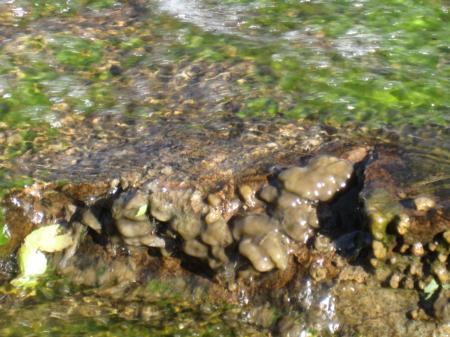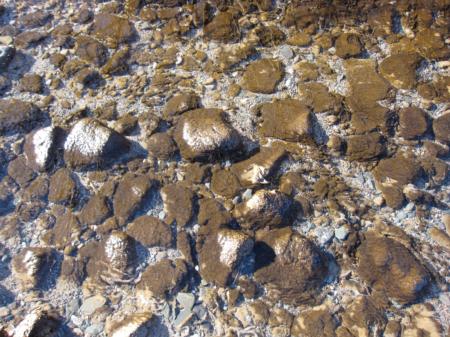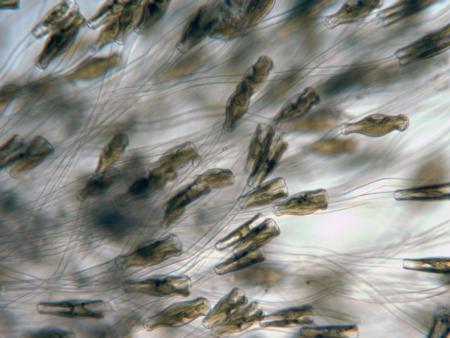Rock Snot
-
Scientific Name
Didymosphenia geminata - Visit ITIS for full scientific classification.
-
Description
- "Rock Snot" is a diatom (a type of single-celled algae).
- This microscopic algae attaches to surfaces and grows in small clumps that become thick brown, tan, or whitish mats.
- They create massive clumpy, or ropy fibrous strands.
- Looks slimy, but feels like wet cotton or wool.
-
Habitat
- Attaches to plants, rocks and other surfaces in cool rivers and streams.
- Prefers cold, clear waters with high flow, but there is concern that it's moving into warmer waters.
-
Invasion Pathways and Distribution
- This microscopic algae can be transported unknowingly on fishing gear, waders, wetsuits, clothing, truck tires, and even pet dogs.
- Has been reported to survive on objects out of the water in cool, dark, damp places for up to 40 days!
- Recreational equipment is the most likely cause for spread.
- See our Stop the Spread! page for instructional videos on how to decontaminate your field gear and the family dog!
- Native to northern Europe, and northern America.
- Considered an "invasive native" due to it's expanding habitat range, and because of it's pesky impacts during high density nuisance blooms.
-
Life History
- Populations grow by vegetative cell division.
- Uncertain for this species, but most diatoms also reproduce sexually.
- During asexual cell division branching stalks are produced.
- During a bloom (rapid growth) stalks form dense fibrous mats.
-
Impacts
- During a bloom, dense mats that cover stream beds are resistant to removal.
- These dense mats may deplete the amount of dissolved oxygen and suitable habitats for certain invertebrate animals.
- May alter invertebrate species composition, favoring species that can feed on Rock Snot, while negatively impacting others.
- Can affect ecosystem function of the freshwater environments where the nuisance blooms occur.
- The dense mats can foul infrastructure interfering with water flow.
-
References and Useful Links
For references by category and links to other useful AIS sites see our Learn More page.



